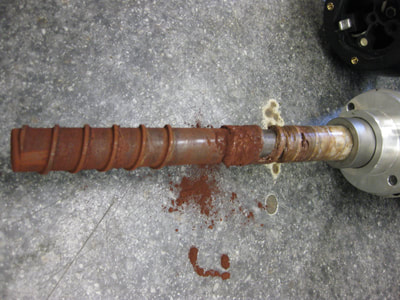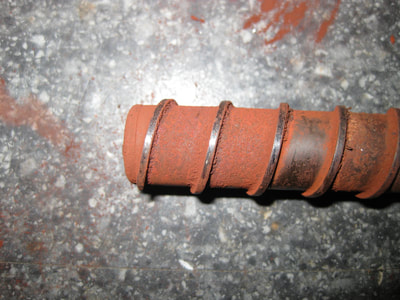|
When PVC is melted or burned, it emits hydrogen chloride (HCl) fumes. At room temperature HCl is a colorless gas, although it will form white fumes of hydrochloric acid upon contact with atmospheric water vapor. When welding PVC the work area should be well ventilated, either naturally or through a forced air system. PVC should only be used with an extrusion welder that specifies compatibility with the material. Components that will be exposed to PVC plastic or HCl fumes in these extruders should either be made with different materials or have a corrosion resistant coating. Using PVC with any extrusion welder without specified compatibility will result in signification corrosion to the internal components in contact with the plastic and fumes (see photos below). In the photos, the corrosion damage to the extruder screw is evident. This costly repair was completed in the STANMECH Service Centre and required the replacement of the extruder screw, extruder tube, and extruder nozzle. The damage could have been avoided by using a tool designed for use with PVC. Corrosion damage caused by using PVC with an extrusion welder not designed for use with PVC Even when using an extruder specifically designed for use with PVC, it is important and recommended to purge the unit with PP or PE welding rod at the end of each welding session. This cleans out the corrosive materials and will prolong the life of the tool.
Looking to purchase an extrusion welder with PVC corrosion protection? Contact your Technical Sales Representative for help selecting the right one. Comments are closed.
|
|
STANMECH Technologies Inc.
944 Zelco Drive Burlington ON L7L 4Y3 | 1-888-438-6324 | [email protected] Terms of Use Privacy Terms and Conditions of Sale Warranty Policies |
|
Proud Member of:



